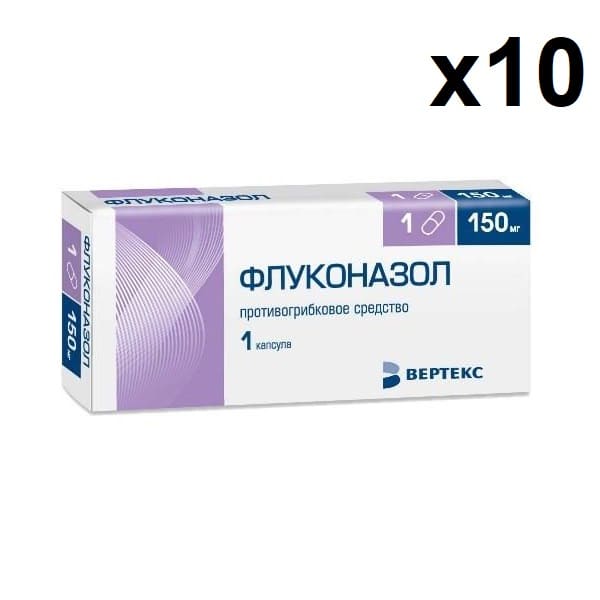You have no items in your shopping cart.

Sku:
pharmachologic effect
Antifungal agent, a derivative of triazole. It is a selective inhibitor of the synthesis of sterols in the fungal cell. Fluconazole is highly specific for fungal enzymes that are dependent on cytochrome P450.
When administered orally and with iv administration, fluconazole was active in various models of fungal infections in animals.
Fluconazole is active in opportunistic mycoses, incl. caused by Candida spp., including generalized candidiasis in animals with reduced immunity; Cryptococcus neoformans, including intracranial infections; Microsporum spp. and Trychoptyton spp. It is active in models of endemic mycoses in animals, including infections caused by Blastomyces dermatitidis, Coccidioides immitis, including intracranial infections, and Histoplasma capsulatum in animals with normal and reduced immunity.
Indications
Cryptococcosis, including cryptococcal meningitis and infections of other localization (eg, lungs, skin), incl. in patients with normal immune response and in AIDS patients, recipients of transplanted organs and patients with other forms of immunodeficiency; Supportive therapy for the prevention of recurrences of cryptococcosis in AIDS patients.
Generalized candidiasis, including candidemia, disseminated candidiasis and other forms of invasive candidiasis infection, such as peritoneal, endocardial, eye, respiratory and urinary tract infections, incl. in patients with malignant tumors who are in the ICU and receiving cytotoxic or immunosuppressive agents, as well as in patients with other factors predisposing to the development of candidiasis.
Candidiasis of mucous membranes, including mucous membranes of the oral cavity and pharynx, esophagus, non-invasive bronchopulmonary infections, candiduria, mucocutaneous and chronic atrophic candidiasis of the oral cavity (associated with wearing dentures), incl. in patients with normal and suppressed immune function; prevention of recurrence of oropharyngeal candidiasis in AIDS patients.
Genital candidiasis; acute or recurrent vaginal candidiasis; prevention to reduce the frequency of recurrence of vaginal candidiasis (3 or more episodes a year); candidiasis balanitis.
Mycosis of the skin, including mycosis of the feet, body, inguinal region, pityriasis, onychomycosis and cutaneous candidiasis infections.
Deep endemic mycoses in patients with normal immunity, coccidioidomycosis, paracoccidioidomycosis, sporotrichosis and histoplasmosis.
Prevention of fungal infections in patients with malignant tumors, predisposed to the development of such infections as a result of cytotoxic chemotherapy or radiation therapy
Dosing regimen
Individual. It is intended for oral and intravenous administration.
For adults, depending on the indications, treatment regimens and the clinical situation, the daily dose is 50-400 mg, the frequency of application is 1 time / day.
For children, the dose is 3-12 mg / kg / day, the frequency of application is 1 time / day.
In patients with impaired renal function, the dose of fluconazole is reduced depending on the CK.
The duration of treatment depends on the clinical and mycological effect.